- Clone
- HI100 (See other available formats)
- Regulatory Status
- RUO
- Workshop
- IV N906
- Other Names
- GP180, L-CA, LCA, LY5, T200, PTPRC
- Isotype
- Mouse IgG2b, κ
- Ave. Rating
- Submit a Review
- Product Citations
- publications
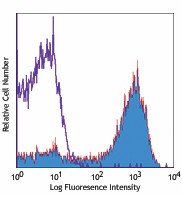
-

Human peripheral blood lymphocytes stained with biotinylated HI100,followed by Sav-PE
| Cat # | Size | Price | Quantity Check Availability | Save | ||
|---|---|---|---|---|---|---|
| 304104 | 100 µg | 76€ | ||||
CD45RA is a 205-220 kD single chain type I glycoprotein. It is an exon 4 splice variant of the tyrosine phosphatase CD45. The CD45RA isoform is expressed on resting/naïve T cells, medullary thymocytes, B cells and monocytes. CD45RA enhances both T cell receptor and B cell receptor signaling. CD45 non-covalently associates with lymphocyte phosphatase-associated phosphoprotein (LPAP) on T and B lymphocytes. CD45 has been reported to be associated with several other cell surface antigens including CD1, CD2, CD3, and CD4. CD45 has also been reported to bind galectin-1. CD45 isoform expression can change in response to cytokines.
Product DetailsProduct Details
- Verified Reactivity
- Human
- Reported Reactivity
- Chimpanzee
- Antibody Type
- Monoclonal
- Host Species
- Mouse
- Formulation
- Phosphate-buffered solution, pH 7.2, containing 0.09% sodium azide.
- Preparation
- The antibody was purified by affinity chromatography, and conjugated with biotin under optimal conditions.
- Concentration
- 0.5 mg/ml
- Storage & Handling
- The antibody solution should be stored undiluted between 2°C and 8°C. Do not freeze.
- Application
-
FC - Quality tested
- Recommended Usage
-
Each lot of this antibody is quality control tested by immunofluorescent staining with flow cytometric analysis. For flow cytometric staining, the suggested use of this reagent is ≤ 0.5 µg per 106 cells in 100 µl volume or 100 µl of whole blood. It is recommended that the reagent be titrated for optimal performance for each application.
- Application Notes
-
Additional reported applications (for relevant formats of this clone) include: inhibition of CD45 functions2, immunohistochemical staining of frozen tissue sections3 and formalin-fixed paraffin-embedded tissue sections4, and immunocytochemistry15,16.
-
Application References
(PubMed link indicates BioLegend citation) -
- Knapp W, et al. 1989. Leucocyte Typing IV. Oxford University Press. New York.
- Yamada T, et al. 2002. J. Biol. Chem. 277:28830. (WB, Block)
- Weninger W, et al. 2003 J. Immunol. 170:4638. (IHC-F)
- Imanguli MM, et al. 2009. Blood. 113:3620 (IHC-P)
- Roque S, et al. 2007. J. Immunol. 178:8028. (FC) PubMed
- Smeltz RB. 2007. J. Immunol. 178:4786. (FC) PubMed
- Palendira U, et al. 2008. Blood (FC) PubMed
- Kuttruff S, et al. 2009. Blood 113:358. (FC) PubMed
- Thakral D, et al. 2008. J. Immunol. 180:7431. (FC) PubMed
- Alanio C, et al. 2010. Blood 115:3718. (FC) PubMed
- Iannello A, et al. 2010. J. Immunol. 184:114. (FC) PubMed
- Yoshino N, et al. 2000. Exp. Anim. (Tokyo) 49:97. (FC)
- Guereau-de-Arellan M, et al. 2011. Brain. 134:3578. PubMed
- Canque B, et al. 2000. Blood 96:3748. (ICC)
- Imanguli MM, et al. 2009. Blood 13:3620. (ICC)
- Stoeckius M, et al. 2017. Nat. Methods. 14:865. (PG)
- Peterson VM, et al. 2017. Nat. Biotechnol. 35:936. (PG)
- RRID
-
AB_314408 (BioLegend Cat. No. 304104)
Antigen Details
- Structure
- Tyrosine phosphatases, type I transmembrane (exon 4 splicing of CD45 gene), 205-220 kD
- Distribution
-
B cells, naïve T cells, monocytes
- Function
- Enhances TCR and BCR signaling
- Ligand/Receptor
- Galectin-1, CD2, CD3, CD4
- Cell Type
- B cells, Monocytes, T cells, Tregs
- Biology Area
- Cell Biology, Immunology, Inhibitory Molecules, Neuroscience, Neuroscience Cell Markers
- Molecular Family
- CD Molecules
- Antigen References
-
1. Thomas M. 1989. Annu. Rev. Immunol. 7:339.
2. Trowbridge I, et al. 1994. Annu. Rev. Immunol.12:85. - Gene ID
- 5788 View all products for this Gene ID
- UniProt
- View information about CD45RA on UniProt.org
Related FAQs
- How many biotin molecules are per antibody structure?
- We don't routinely measure the number of biotins with our antibody products but the number of biotin molecules range from 3-6 molecules per antibody.
Other Formats
View All CD45RA Reagents Request Custom ConjugationCustomers Also Purchased
Compare Data Across All Formats
This data display is provided for general comparisons between formats.
Your actual data may vary due to variations in samples, target cells, instruments and their settings, staining conditions, and other factors.
If you need assistance with selecting the best format contact our expert technical support team.
-
APC anti-human CD45RA
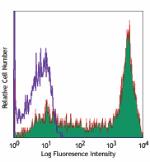
Human peripheral blood lymphocytes stained with HI100 APC -
Biotin anti-human CD45RA
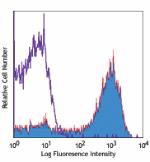
Human peripheral blood lymphocytes stained with biotinylated... -
FITC anti-human CD45RA
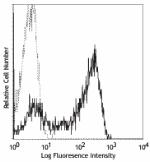
Human peripheral blood lymphocytes stained with HI100 FITC -
PE anti-human CD45RA
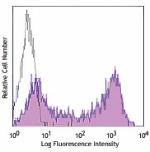
Human peripheral blood lymphocytes were stained with CD45RA ... -
PE/Cyanine5 anti-human CD45RA
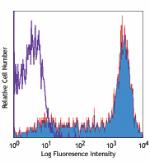
Human peripheral blood lymphocytes stained with HI100 PE/Cya... -
Purified anti-human CD45RA
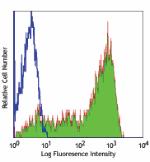
Human peripheral blood platelets stained with purified HI100... 
SeqIF™ (sequential immunofluorescence) staining on COMET™ of... -
Alexa Fluor® 488 anti-human CD45RA
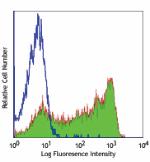
Human peripheral blood lymphocytes stained with HI100 Alexa ... -
Alexa Fluor® 647 anti-human CD45RA
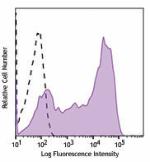
Human peripheral blood lymphocytes were stained with CD45RA ... 
Human paraffin-embedded tonsil tissue slices were prepared w... -
Pacific Blue™ anti-human CD45RA
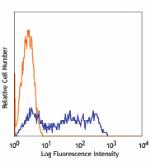
Human peripheral blood lymphocytes stained with HI100 Pacifi... -
Alexa Fluor® 700 anti-human CD45RA
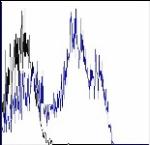
Human peripheral blood lymphocytes stained with HI100 Alexa ... -
PerCP/Cyanine5.5 anti-human CD45RA

Human peripheral blood lymphocytes were stained with CD45RO ... -
PE/Cyanine7 anti-human CD45RA
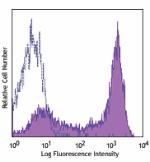
Human peripheral blood lymphocytes were stained with HI100 P... -
APC/Cyanine7 anti-human CD45RA
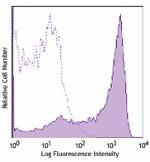
Human peripheral blood lymphocytes were stained CD45RA (clon... -
Brilliant Violet 421™ anti-human CD45RA
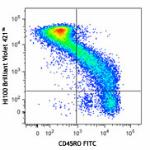
Human peripheral blood lymphocytes were stained with CD45RO ... 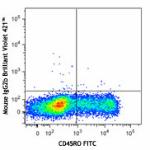
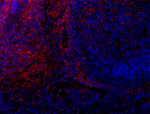
Human paraffin-embedded tonsil tissue slices were prepared w... -
Brilliant Violet 570™ anti-human CD45RA
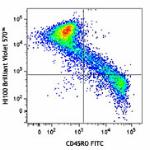
Human peripheral blood lymphocytes were stained with CD45RO ... 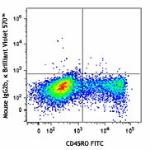
-
Brilliant Violet 605™ anti-human CD45RA
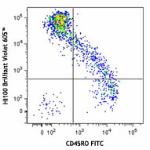
Human peripheral blood lymphocytes were stained with CD45RO ... -
Brilliant Violet 650™ anti-human CD45RA
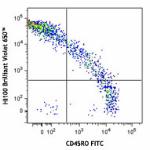
Human peripheral blood lymphocytes were stained with CD45RO ... -
Brilliant Violet 711™ anti-human CD45RA
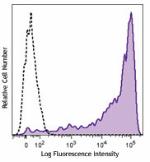
Human peripheral blood lymphocytes stained with CD45RA (clon... -
Brilliant Violet 785™ anti-human CD45RA
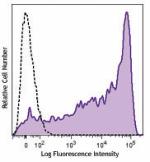
Human peripheral blood lymphocytes stained with CD45RA (clon... -
Brilliant Violet 510™ anti-human CD45RA
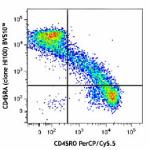
Human peripheral blood lymphocytes were stained with CD45RO ... -
Purified anti-human CD45RA (Maxpar® Ready)
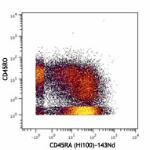
Human PBMCs stained with 149Sm-anti-CD45RO (UCHL1) and 143Nd... -
PE/Dazzle™ 594 anti-human CD45RA
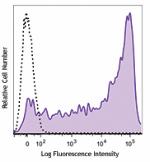
Human peripheral blood granulocytes were stained with CD45RA... -
APC/Fire™ 750 anti-human CD45RA
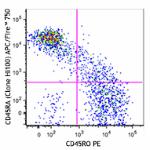
Human peripheral blood lymphocytes were stained with CD45RO ... 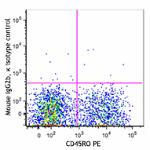
-
PerCP anti-human CD45RA
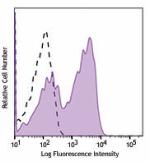
Human peripheral blood lymphocytes were stained with CD45RA ... -
FITC anti-human CD45RA
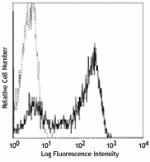
Typical results from human peripheral blood lymphocytes stai... -
TotalSeq™-A0063 anti-human CD45RA
-
Alexa Fluor® 594 anti-human CD45RA
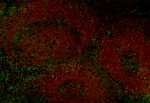
Human paraffin-embedded tonsil tissue slices were prepared w... -
TotalSeq™-B0063 anti-human CD45RA
-
TotalSeq™-C0063 anti-human CD45RA
-
Brilliant Violet 750™ anti-human CD45RA

Human peripheral blood lymphocytes were stained with CD45RO ... -
Spark NIR™ 685 anti-human CD45RA

Human peripheral blood lymphocytes were stained with CD45RO ... -
APC anti-human CD45RA

Typical results from human peripheral blood lymphocytes stai... -
PE/Fire™ 640 anti-human CD45RA

Human peripheral blood lymphocytes were stained with anti-hu... -
PE/Fire™ 700 anti-human CD45RA Antibody

Human peripheral blood lymphocytes were stained with anti-hu... -
Spark YG™ 581 anti-human CD45RA

Human peripheral blood lymphocytes were stained with anti-hu... -
TotalSeq™-D0063 anti-human CD45RA
-
Spark Violet™ 423 anti-human CD45RA

Human peripheral blood lymphocytes were stained with anti-hu... 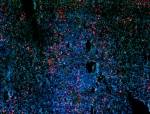
IHC staining of Spark Violet™ 423 anti-human CD45RA (clone H... -
GMP FITC anti-human CD45RA
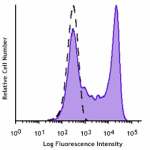
Typical results from human peripheral blood lymphocytes stai... -
PE/Cyanine7 anti-human CD45RA
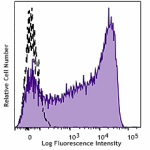
Typical results from human peripheral blood lymphocytes stai... -
PE/Dazzle™ 594 anti-human CD45RA
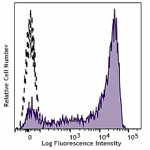
Typical results from human peripheral blood lymphocytes stai... -
APC/Fire™ 750 anti-human CD45RA
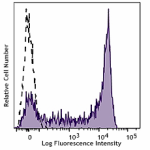
Typical results from human peripheral blood lymphocytes stai... -
Spark UV™ 387 anti-human CD45RA

Human peripheral blood lymphocytes were stained with anti-hu... -
GMP APC anti-human CD45RA
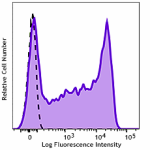
Typical results from human peripheral blood lymphocytes stai... -
TotalSeq™-Bn0063 anti-human CD45RA
-
Spark Blue™ 550 anti-human CD45RA

Human peripheral blood lymphocytes were stained with anti-hu... -
GMP PE/Dazzle™ 594 anti-human CD45RA
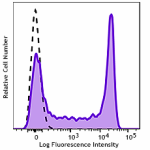
Typical results from human peripheral blood lymphocytes stai... -
GMP APC/Fire™ 750 anti-human CD45RA

Typical results from human peripheral blood lymphocytes stai... -
Spark PLUS UV™ 395 anti-human CD45RA

Human peripheral blood lymphocytes were stained with anti-hu... -
Spark Red™ 718 anti-human CD45RA

Human peripheral blood lymphocytes were stained with anti-hu...
 Login / Register
Login / Register 







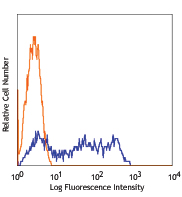
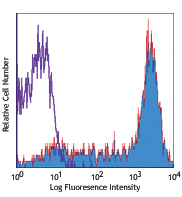
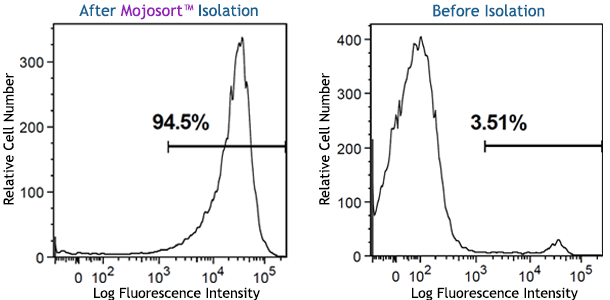
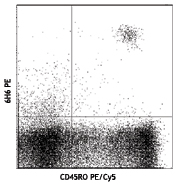



Follow Us